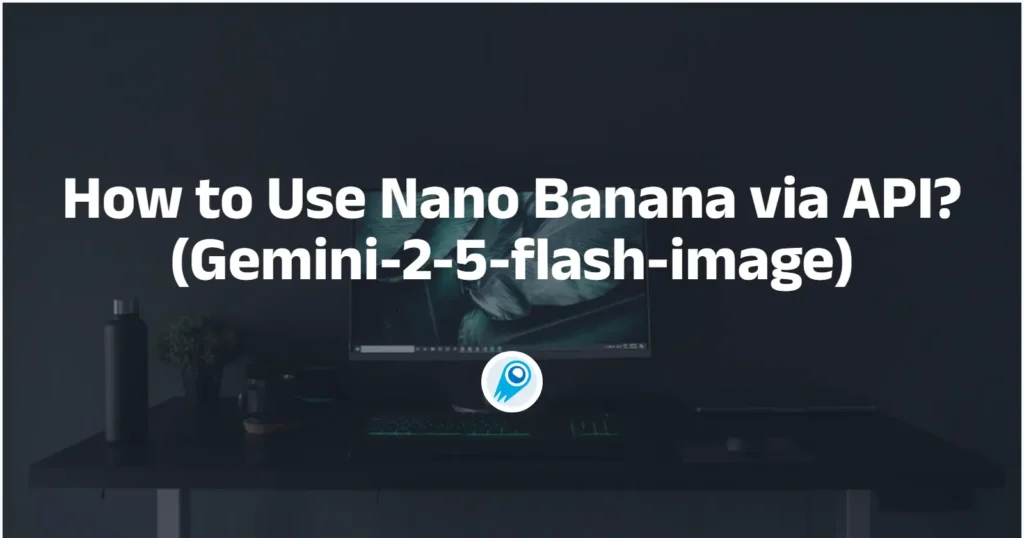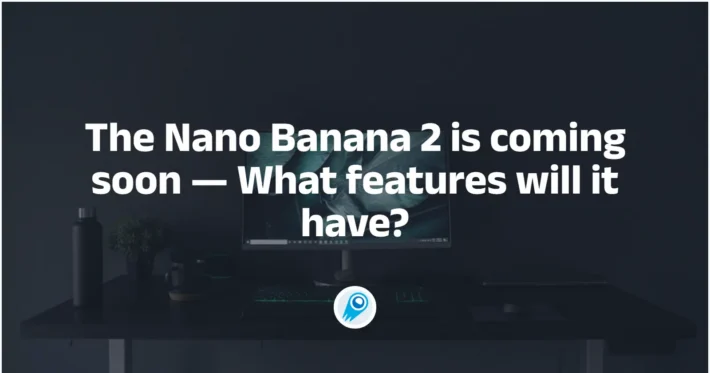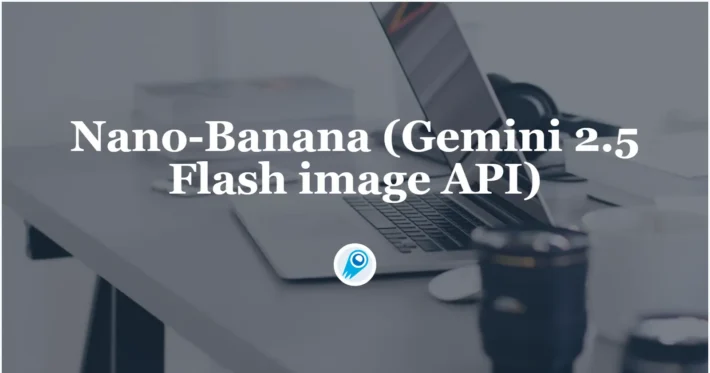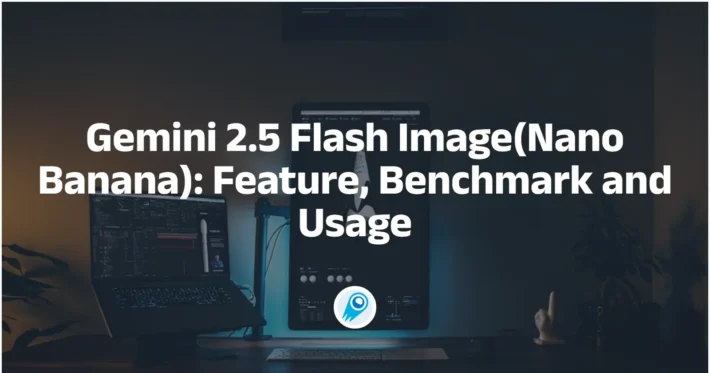How to Use Nano Banana via API?(Gemini-2-5-flash-image)

Nano Banana is the community nickname (and internal shorthand) for Google’s Gemini 2.5 Flash Image — a high-quality, low-latency multimodal image generation + editing model. This long-form guide (with code, patterns, deployment steps, and CometAPI examples) shows three practical call methods you can use in production: (1) an OpenAI-compatible Chat interface (text→image), (2) Google’s official generateContent text→image interface, and (3) Google’s official generateContent image→image interface using Base64 input/output. Along the way you’ll get step-by-step distribution/deployment advice, environment setup, how to get API operations from CometAPI, pricing & watermark notes, and best tips for reliable, cost-efficient results.
What is Nano Banana (Gemini 2.5 Flash Image)?
Nano Banana is the informal name given to Gemini 2.5 Flash Image, Google’s latest image model in the Gemini family. It’s designed for both photorealistic image generation and precise image editing (local edits, multi-image fusion, consistent character preservation across edits), and is available through Google’s Gemini API, Google AI Studio, and Vertex AI. The model ships with an invisible SynthID watermark for provenance.
Why this matters to developers: Nano Banana gives you a single, high-quality multi-modal model that can handle:
- Text → Image (create new images from text prompts)
- Image → Image (edit/transform a provided photo)
- Multi-image blending (combine multiple pictures into a single composite)
All of this is accessible either through Google’s officialgenerateContentendpoints (Vertex AI / Gemini API) or via OpenAI-compatible endpoints offered by third-party API gateways such as CometAPI and OpenRouter. That means you can integrate Gemini 2.5 Flash Image into existing OpenAI-compatible codebases or call Google’s official SDKs directly.
What it excels at
- Targeted, local edits (change a shirt color, remove objects, tweak poses).
- Maintaining subject/character consistency across re-edits.
- Blending/merging multiple images into a coherent composite.
- Low latency and cost-efficient inference compared to heavier research models (Google positions “Flash” models as high-throughput options).
How should I set up my development environment to call Nano Banana via API?
Below is a step-by-step checklist you can treat as a baseline for any of the three call methods described later.
Prerequisites (accounts, keys, quota)
- Google account + Cloud project — If you plan to call Gemini directly via Google (Gemini API / Vertex AI), create a Google Cloud project and enable the Vertex AI / Gemini APIs. You’ll need billing and proper roles (e.g.,
Vertex AI AdminorService Accountwith inference rights). - Gemini API access — Some Gemini image models are preview/limited availability; you may need to request access or use the model via Google AI Studio or Vertex AI depending on your account.
- CometAPI (optional gateway) — If you prefer a single vendor-agnostic API that can proxy different models (including Gemini), sign up at CometAPI to get an API key and review their model list (they expose Gemini 2.5 Flash variants and an OpenAI-compatible endpoint). CometAPI can simplify development and let you switch providers without changing your app code.
Local tooling
- Language runtimes: Node.js 18+, Python 3.10+ recommended.
- HTTP client:
fetch/axiosfor JS;requests/httpxfor Python (or official SDKs). - Image helpers:
Pillow(Python) orsharp(Node) for resizing, format conversion, and Base64 encoding/decoding. - Security: store keys in environment variables or a secrets vault (HashiCorp Vault, AWS Secrets Manager, Google Secret Manager). Never commit API keys.
Install the Google/compatible SDK (optional)
Google provides SDKs and openai library compatibility shims — you can use the OpenAI client libraries against Gemini by changing a few lines (base URL + API key), but the native Gemini/Google client is recommended for full multimodal features. If using CometAPI or an OpenAI-compatible gateway, using the OpenAI client can speed development,examples:
Official Google route (Python):
python -m venv venv && source venv/bin/activate
pip install --upgrade pip
pip install google-genai # official Google GenAI SDK
pip install Pillow requests jq # for local image handling in examplesCometAPI / OpenAI-compatible client (Python):
pip install openai requestsHow do I choose between the three call methods for Nano Banana?
Choosing a call method depends on your architecture, latency/cost requirements, and whether you want to rely on Google’s official endpoint or a third-party OpenAI-compatible gateway. The three common patterns are:
1) OpenAI-compatible Chat interface (text-to-image)
Use this when you already have OpenAI-style code or SDKs and want to switch models with minimal changes. Many gateways (CometAPI, OpenRouter) expose Gemini models under an OpenAI-compatible REST surface so your existing chat or completions calls work with just a different base_url and model name. This is often the fastest path to production if you don’t want to manage Google Cloud auth.
2) Gemini official generateContent — text-to-image
Use Google’s official generateContent via the genai (Google) client or Vertex AI if you want the official, fully supported SDK and access to the latest features (fine-grained generation parameters, streaming, file API for large assets), plus Google Cloud billing/monitoring. This is recommended when you need production support and enterprise-grade controls.
3) Gemini official generateContent — image-to-image (Base64 input/output)
Use this when you must submit binary images inline (Base64) or want image editing / image-to-image pipelines. Google’s generateContent supports inline (base64) images and a File API for larger or reusable assets. Responses for generated/edited images are typically returned as Base64 strings that you decode and save. This gives the most explicit multimodal control.
How can I call Nano Banana via an OpenAI-compatible Chat interface (text-to-image)?
An OpenAI-compatible chat endpoint accepts a sequence of {role, content} messages; you describe what image you want in a user message and the gateway (CometAPI or an OpenAI-compatibility shim) translates that into a call to the underlying Gemini model. This is convenient if your app already uses chat flows or you want to combine text generation + image generation in a single exchange.
Steps
1.Sign up for CometAPI and get an API key: Register at CometAPI, create a project, copy your API key. CometAPI exposes many models behind a single base_url. ([CometAPI][11])
2. Install an OpenAI-compatible client: Python: pip install openai or use the newer openai/OpenAI SDK wrapper used by many gateways.
3. Point the SDK to CometAPI and call the chat completions endpoint:
curl https://api.cometapi.com/v1/chat/completions \
-H "Authorization: Bearer $COMET_API_KEY" \
-H "Content-Type: application/json" \
-d '{
"model": "gemini-2-5-flash-image-preview",
"stream": true,
"messages": [{"role": "user",
"content": "Generate a cute kitten sitting on a cloud, in a cartoon style"}]
}'Notes:
1. stream must be true; the response will be returned as a stream;
2. The response structure is wrapped by CometAPI for OpenAI compatibility.
3. The response includes a Base64 image; decode and save it on the client as needed:
How can I call Nano Banana using the Gemini official generateContent text-to-image interface?
Google provides a Gemini Developer API (the Gemini API) and also exposes Gemini models via Vertex AI. For programmatic access to Gemini 2.5 Flash Image (Nano Banana) in a supported way, the official generateContent method is the canonical entry point for text-only or multimodal generation. Use Google’s GenAI SDK (Python: google-genai) or call the REST endpoint directly.It gives direct access to the model’s parameters and modalities, and is the recommended way to use advanced features (precise editing, multi-image fusion) when calling Google’s endpoints.
1.Use Google’s GenAI SDK (Python: google-genai)
Distribution / call steps (overview):
- Get an API key from Google AI Studio or set up a Vertex AI service account (depending on platform).
- Install SDK (
pip install --upgrade google-genai) and authenticate (API key or Google Application Default Credentials). - Choose the model:
gemini-2.5-flash-imageor the preview slug shown in docs (exact slug depends on GA/preview state). - Call
client.models.generate_content(...)with a plain text prompt (text-to-image). - Decode returned images (if returned Base64) and save/store.
Python (official client) example — text→image:
from google import genai
from base64 import b64decode, b64encode
client = genai.Client(api_key="YOUR_GEMINI_KEY")
prompt = {
"content": "A hyperrealistic photo of a vintage motorcycle parked under neon lights at midnight",
"mime_type": "text/plain"
}
# request generateContent for image output
result = client.generate_content(
model="gemini-2-5-flash-image-preview",
prompt=prompt,
response_modalities=["IMAGE","TEXT"],
image_format="PNG",
)
# handle binary or base64 in response (depends on API mode)(Note: check the official client API for exact parameter names — examples above follow patterns in the Google docs.)
2. Call Nano Banan via the REST endpoint
EST endpoint (text-to-image example): https://api.CometAPI.com/v1beta/models/gemini-2.5-flash-image-preview:generateContent.
Authentication options: supply header x-goog-api-key: $CometAPI_API_KEY. (Create a key in CometAPI.)
This posts a text prompt and saves the returned base64 image:
curl -s -X POST \
"https://generativelanguage.googleapis.com/v1beta/models/gemini-2.5-flash-image-preview:generateContent" \
-H "x-goog-api-key: $GEMINI_API_KEY" \
-H "Content-Type: application/json" \
-d '{
"contents": [{
"parts": [
{ "text": "A photorealistic nano banana dish plated in a stylish restaurant, cinematic lighting, 3:2 aspect ratio" }
]
}]
}' \
| jq -r '.candidates[0].content.parts[] | select(.inline_data) | .inline_data.data' \
| base64 --decode > gemini-image.png
Notes: The image binary is returned as base64 in
candidates[0].content.parts[*].inline_data.data. The example above usesjqto pick the inline data and decodes it. The official docs show the same flow.
How can I call Nano Banana using the Gemini official generateContent image-to-image interface (Base64 in/out)?
When should you use image-to-image (base64 in/out)?
Use image-to-image when you need to:
- Edit an existing photo (inpainting, style transfer, object replacement).
- Combine multiple source images into a single composition.
- Preserve a subject’s identity across edits (one of Nano Banana’s strengths).
Gemini’s generateContent supports inline image data via Base64 (or as file URIs) and returns generated or edited images as Base64 strings. The docs give explicit examples for providing inline_data with mime_type and data.
Distribution / call steps (image-to-image)
- Prepare input image(s): read file bytes, Base64 encode, or pass raw bytes via SDK helper.
- Construct a
contentsarray where one part is the inline image (withmimeTypeanddata) and subsequent parts include the textual editing instructions. - POST to
generateContent(official SDK or REST). - Receive response: the API returns generated/edited images encoded as Base64 strings. Decode and save them locally.
Example — Python (image-to-image using inline bytes via the GenAI SDK)
# pip install google-genai
from google import genai
from google.genai import types
import base64
client = genai.Client(api_key="YOUR_GOOGLE_API_KEY")
# Read local image
with open("input_photo.jpg", "rb") as f:
img_bytes = f.read()
# Using SDK helper to attach bytes as a part
response = client.models.generate_content(
model="gemini-2.5-flash-image-preview",
contents=[
types.Part.from_bytes(
data=img_bytes,
mime_type="image/jpeg"
),
"Make a high-quality edit: change the subject's jacket color to teal, keep natural lighting and preserve the person's facial features."
],
)
# The returned image will typically be in response.candidates[].content.parts with base64-encoded data
# Decode and save (pseudo-access shown; check SDK response structure)
b64_out = response.candidates[0].content.parts[0].data # example path
with open("edited.jpg","wb") as out:
out.write(base64.b64decode(b64_out))
Python example: image→image using Base64 via rest point
import base64, json, requests
API_URL = "https://api.gemini.googleapis.com/v1/generateContent"
API_KEY = "YOUR_GEMINI_KEY"
# read and base64-encode image
with open("input.jpg","rb") as f:
b64 = base64.b64encode(f.read()).decode("utf-8")
payload = {
"model": "gemini-2-5-flash-image-preview",
"input": [
{"mime_type": "image/jpeg", "bytes_base64": b64},
{"mime_type": "text/plain", "text": "Remove the lamppost and make the sky golden at sunset."}
],
"response_modalities": ["IMAGE"]
}
resp = requests.post(API_URL, headers={"Authorization":f"Bearer {API_KEY}", "Content-Type":"application/json"}, json=payload)
resp.raise_for_status()
data = resp.json()
# data.candidates... may contain image base64 — decode and save
out_b64 = data["candidates"][0]["content"]["parts"][0]["image_bytes_base64"]
with open("edited.png","wb") as out:
out.write(base64.b64decode(out_b64))If you want to access it using the CometAPI rest port:
curl
--location
--request POST "https://api.CometAPI.com/v1beta/models/gemini-2.5-flash-image-preview:generateContent" ^
--header "Authorization: sk-" ^
--header "User-Agent: Apifox/1.0.0 (https://apifox.com)" ^
--header "Content-Type: application/json" ^
--header "Accept: */*" ^
--header "Host: api.CometAPI.com" ^
--header "Connection: keep-alive" ^
--data-raw "{ \"contents\": [ { \"role\": \"user\", \"parts\": [ { \"text\": \"'Hi, This is a picture of me. Can you add a llama next to me\" }, { \"inline_data\": { \"mime_type\": \"image/jpeg\", \"data\": \"iVBORw0KGgoA Note: base64 goes here\" } } ] } ], \"generationConfig\": { \"responseModalities\": [ \"TEXT\", \"IMAGE\" ] }}"For inline: read the image and base64 encode it. For repeated use or >20MB, upload via the File API and reference the file handle in
generateContent.Best for precise edits and workflows that need input images plus textual edit instructions.
What are the best tips in working with Nano Banana?
Prompt engineering & control
- Be explicit: include desired aspect ratio, style references (artist names only if allowed), camera lens, lighting, and composition. E.g., “Photorealistic, 3:2, shallow depth-of-field, golden hour, Nikon 50mm lens.”
- Use successive editing: prefer smaller, local edits in multiple passes to large single-shot prompts — this preserves subject consistency. Nano Banana’s strength is iterative editing.
Image hygiene
- Preprocess inputs: normalize color space, remove embedded EXIF if privacy is required, scale to sensible resolutions to save tokens.
- Postprocess outputs: run face detection, cleanup minor artifacts via lightweight filters (Pillow / sharp) before returning to users.
Safety, compliance & content policies
- Implement an automated content safety check (Vision moderation models or blacklist checks) before storing/serving images.
- If upload images of people, follow applicable privacy laws (GDPR/CCPA) and obtain necessary consents.
- Respect model usage policies and copyright rules when prompting for copyrighted characters or existing artworks.
Closing notes
Nano Banana (Gemini 2.5 Flash Image) represents a pragmatic, high-fidelity step for multimodal image generation and editing: it’s designed for consistency across edits and richer multimodal reasoning.Nano Banana (Gemini 2.5 Flash Image) is an important step in image generation/editing — offering high consistency for multi-step edits and multiple integration surfaces (OpenAI-compatible gateways like CometAPI and Google’s generateContent APIs). For speed of adoption, gateways like CometAPI let you reuse OpenAI-style code.Always sanity-check responses, respect content policy and provenance features (SynthID), and monitor costs during iteration.
Getting Started
CometAPI is a unified API platform that aggregates over 500 AI models from leading providers—such as OpenAI’s GPT series, Google’s Gemini, Anthropic’s Claude, Midjourney, Suno, and more—into a single, developer-friendly interface. By offering consistent authentication, request formatting, and response handling, CometAPI dramatically simplifies the integration of AI capabilities into your applications. Whether you’re building chatbots, image generators, music composers, or data‐driven analytics pipelines, CometAPI lets you iterate faster, control costs, and remain vendor-agnostic—all while tapping into the latest breakthroughs across the AI ecosystem.
Developers can access Gemini 2.5 Flash Image(Nano Banana CometAPI list gemini-2.5-flash-image-preview/gemini-2.5-flash-image style entries in their catalog.) through CometAPI, the latest models version listed are as of the article’s publication date. To begin, explore the model’s capabilities in the Playground and consult the API guide for detailed instructions. Before accessing, please make sure you have logged in to CometAPI and obtained the API key. CometAPI offer a price far lower than the official price to help you integrate.



